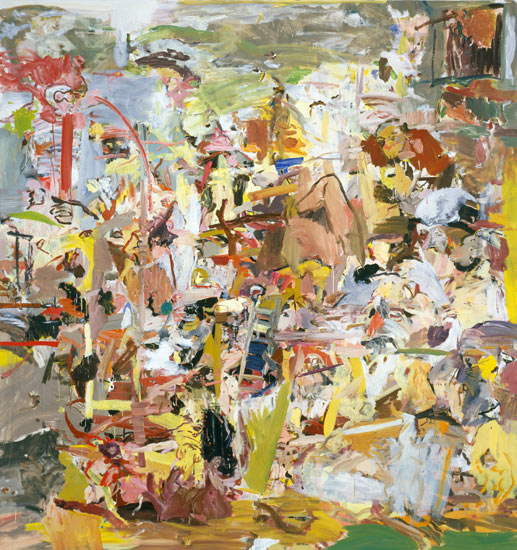
Phillip Allen,
Between the Soup and the Cheese - version 5,
2009, oil on canvas, 50x50cm
Phillip Allen is a British born painter best known for his unique brand of abstraction incorporating modernist design motifs and contemporary painterly conventions. In a current exhibition at Transition Gallery in London, Allen, alongside Rose Wiley and Jake Clark, is showing a new set of works that represent a stylistic departure from his earlier paintings. Allen chooses an all-over treatment of the canvas yet, like his past work, still explores the delicacies of paint and their relationship to surface. In some of the works a full or partial narrow frame anchors the geometric forms nicely - an interesting and effective evolution from the two deliciously thick icing-like bands typically featured in former paintings. When I first saw these new works I really sat up and took notice because, to be honest, they just make the whole process of painting (arduous layering, gruelling removal, infuriating re laying etc etc) look so easy. Can you tell I'm a little frustrated right now? Seriously...this painter has all the tools and the nuanced visual language to make a beautifully rendered abstract painting. It is also, from what I can glean from my internet research, a style that is quintessentially British (a Prunella Clough legacy, perhaps? without forgetting a Nozkowskiesque nod to the small format, of course) and I'm very much enamoured of what is being made in that part of the world right now like this, and these.
























